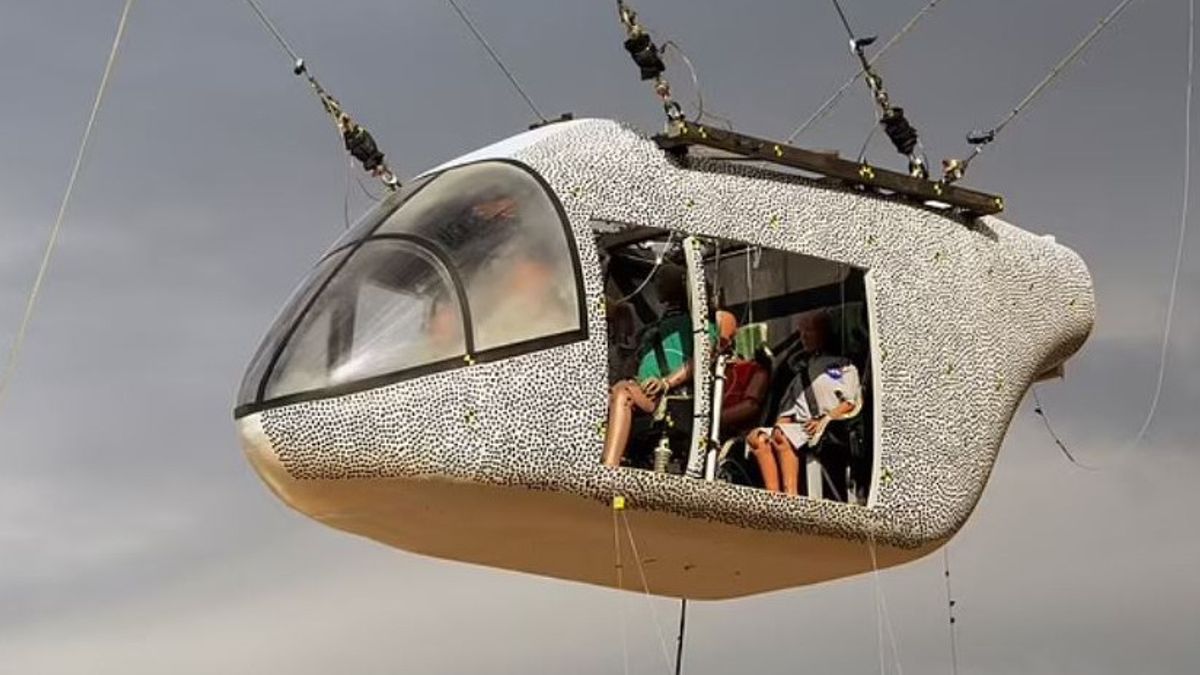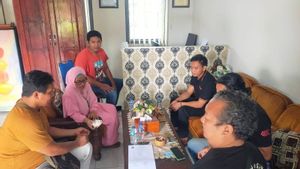JAKARTA – While flying cars have long been the vision of science fiction films, many companies, including NASA, are now starting to make it happen.
However, the US space agency has had one flying car 'crash beyond expectation' after crashing into it on purpose.
The test was conducted to see how an electric vertical take-off and landing (eVTOL) vehicle would respond to such an event.
Simulating a 'terrible crash', NASA engineers dropped an eVTOL dummy containing six crash test dummies from a height.
The test aircraft is the government's reference design for a futuristic six-person all-composite eVTOL aircraft.
It was a 'Lift+Cruise' model, meaning it would take off vertically and glide like a conventional airplane.
Before being dropped, various experiments were mounted on the test aircraft which allowed researchers to understand how realistic the simulations were.
The tests included multiple seat configurations, crash test dummies of various sizes and a NASA-developed modular energy-absorbing composite subfloor.
The aircraft was first lifted into the air at the Landing and Impact Research (LandIR) facility at NASA's Langley Research Center in Hampton, Virginia.
It was then released with pyrotechnic cutters, resulting in a 'complete collapse' that exceeded computer predictions.
While the test cockpit base and safety seats functioned as they should, the overhead structure collapsed. The weight of the flight mechanic simulation above the cockpit seems to crush the passenger space.
"While we are still going through the data and video, and these results are preliminary, we do see that two main events occurred during this assay," said Justin Littell, research assistant for the Langley Branch of Structural Dynamics, as quoted by the Daily Mail.
VOIR éGALEMENT:
One report details this as: 'The first event was the demolition of floors and chairs. The subfloor and energy absorbing seats function as intended and limit impact effects on the crash test dummies.”
“The second is the collapse of the overhead structure. The effect of the collapsing overhead structure on crash test dummies is still being determined," Littell added.
NASA has acknowledged that various eVTOL designs will perform differently, and will analyze the data in this and future drop tests.
“For this test, an overhead-mass was designed to represent the wing, rotor and battery structures. The decision was made to assume that all of the overhead structure weight would be above the cab. There are many other overhead-mass configurations that may behave differently in crashes," said a spokesperson for the Langley Research Center quoted by the Daily Mail.
"The test was a huge success for the crashworthiness team at Langley," Littell added. "We successfully tested an eVTOL vehicle concept representing a six-passenger, high-wing, overhead mass, multi-rotor vehicle, obtained more than 200 data channels, and collected more than 20 onboard and off-board camera views."
"Our computational pretest model does a good job predicting composite deformation to overhead structural failure," he said. "However, the computational model does not predict overall collapse as seen in testing."
Full-scale test data from onboard experiments will be used to improve the simulation model so that in the future, predictions will be more realistic.
The data will then be used as a basis for evaluating potential test conditions and configurations to be used during the second drop test of the test article, scheduled for late 2023.
The test was completed as part of NASA's Revolutionary Vertical Left Technology (RVLT) project to advance research for the Advanced Air Mobility (AAM) mission.
NASA says its vision for AAM is to help the emerging aviation market safely develop air transportation systems that move people and cargo between places previously unserved or underserved by aviation.
"Understanding how these future aircraft might act in a crash scenario is another key research point," they said.
The English, Chinese, Japanese, Arabic, and French versions are automatically generated by the AI. So there may still be inaccuracies in translating, please always see Indonesian as our main language. (system supported by DigitalSiber.id)













